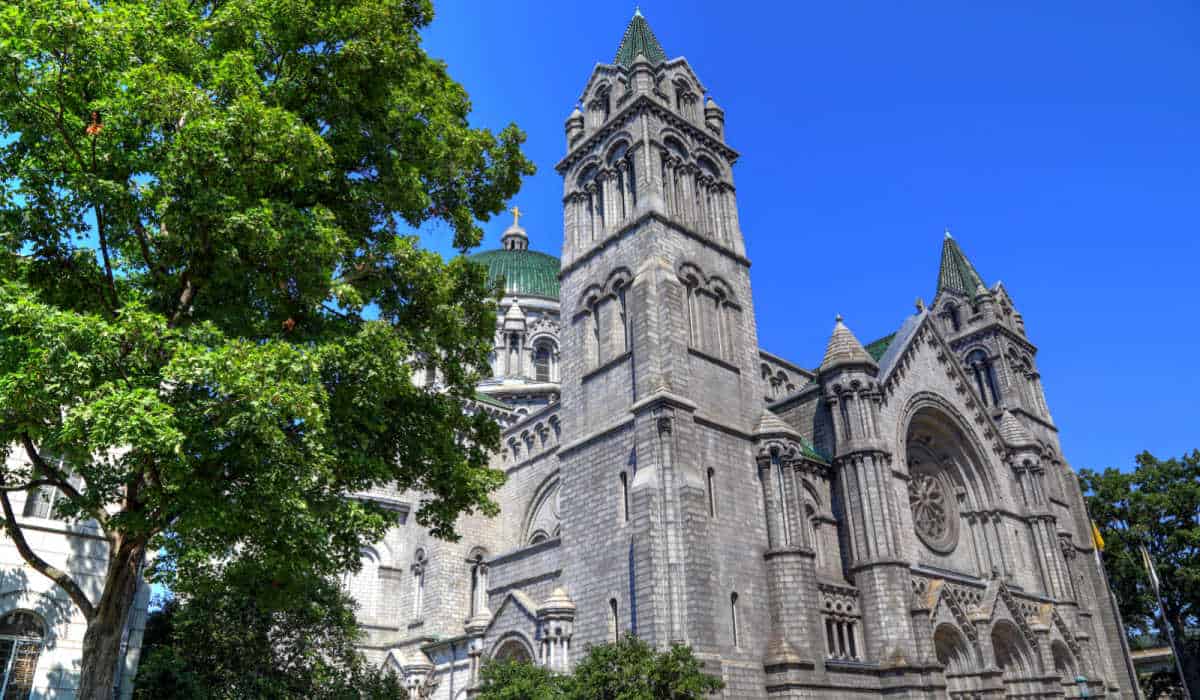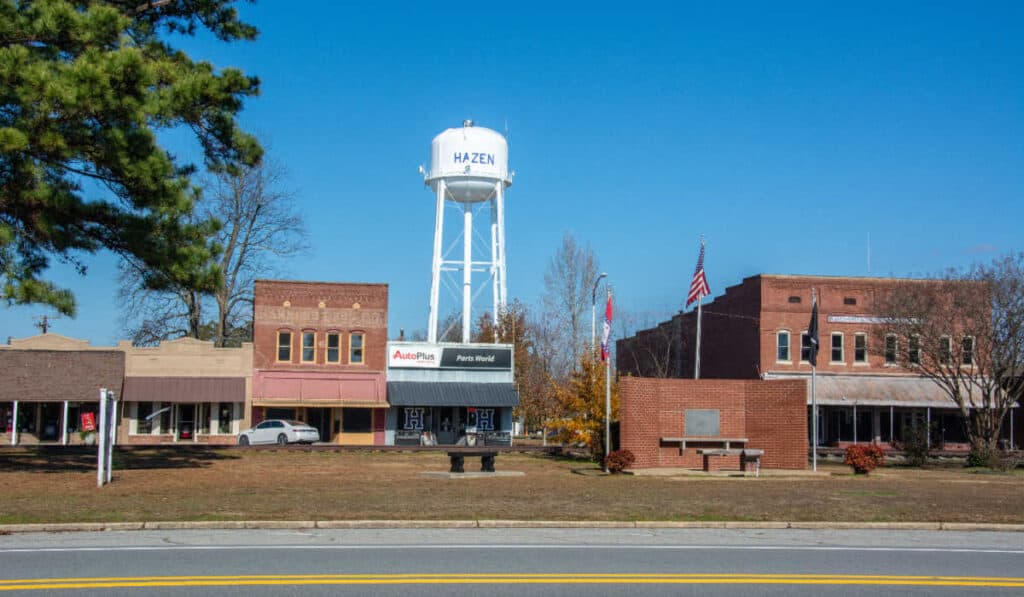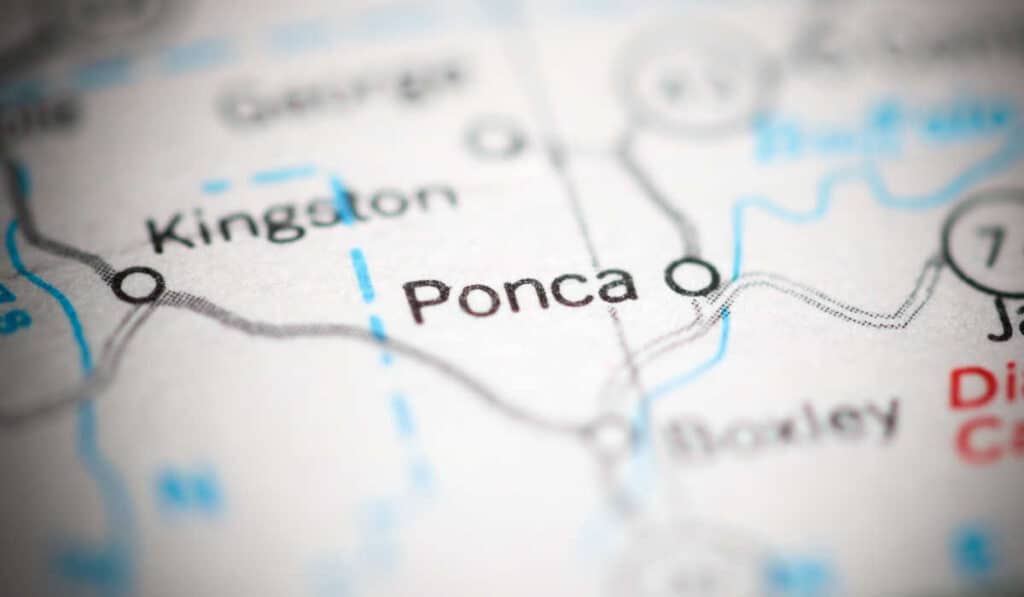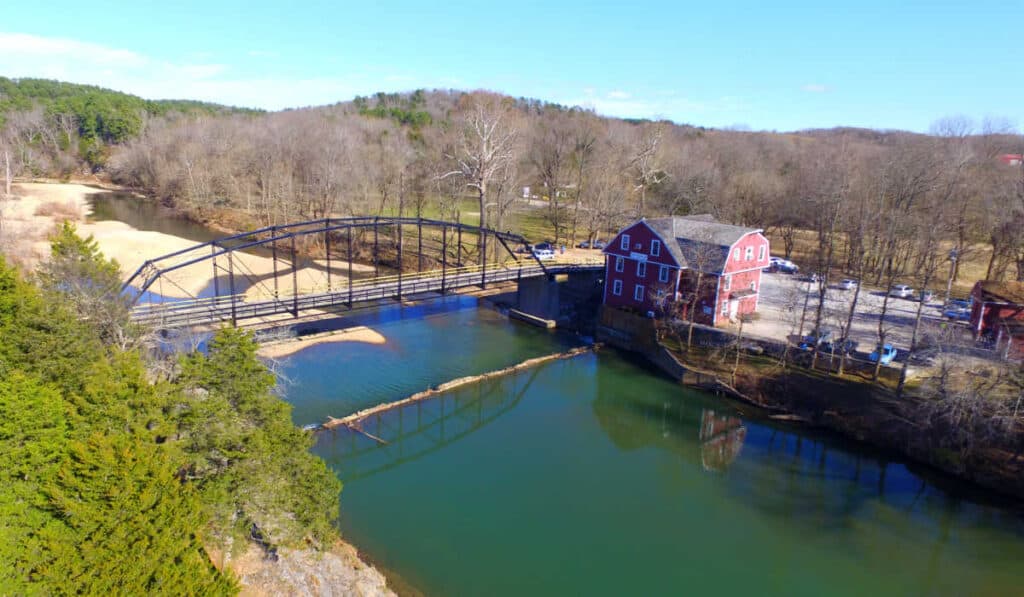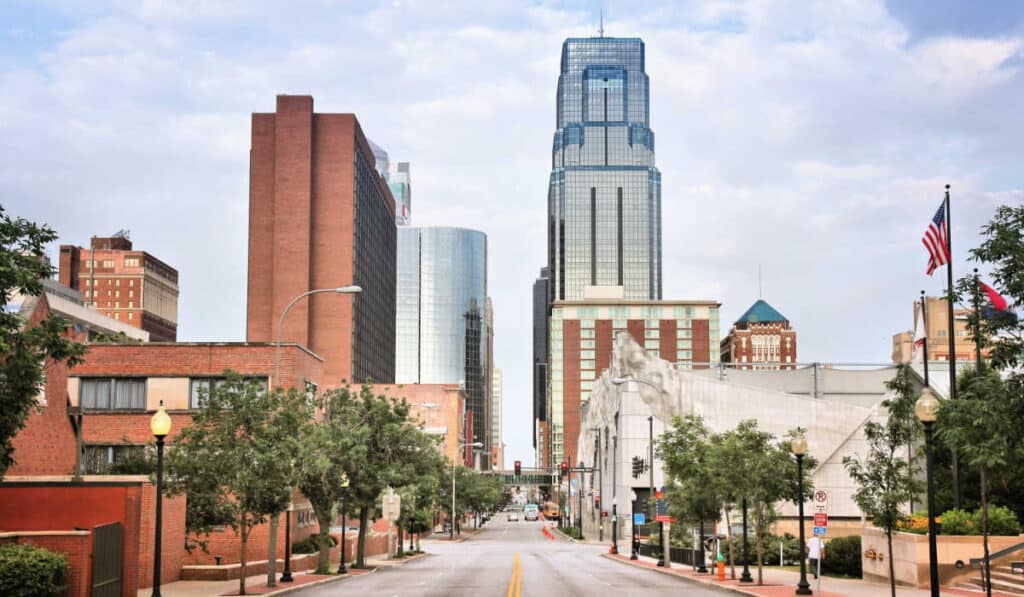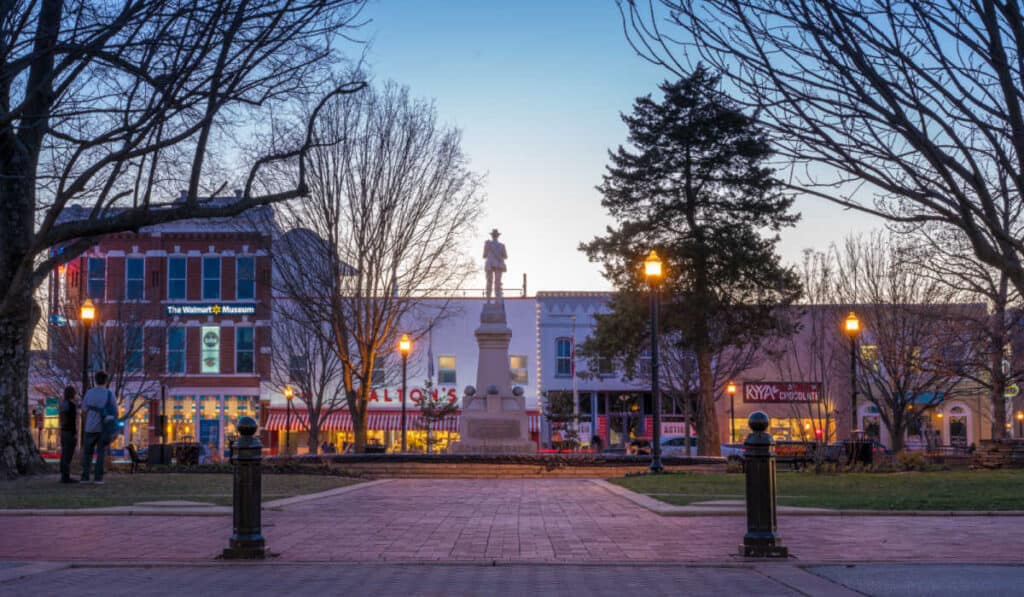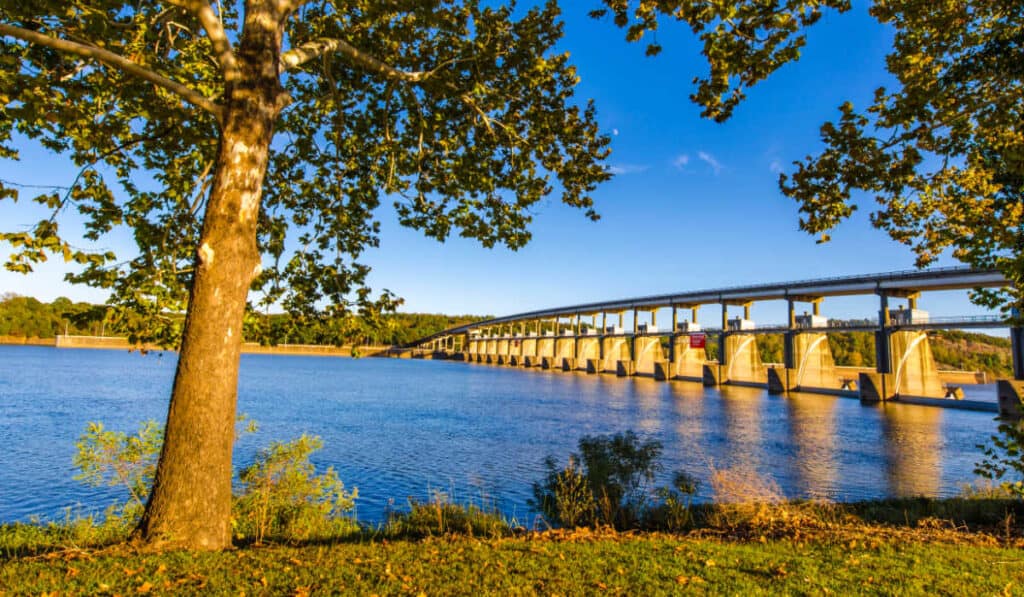The Ozarks region, which spans parts of Missouri, Arkansas, and Oklahoma, is known for its beautiful landscapes, rich culture, and fascinating history. Among the many attractions that draw visitors year after year, the historic churches of the Ozarks showcase the area’s deep-rooted religious traditions and architectural marvels. As I explored these churches, I found each one to be a unique reflection of the communities they serve and an important part of the region’s heritage.
Many of the historic churches in the Ozarks date back to the 19th and early 20th centuries, blending various architectural styles such as Gothic, Romanesque, and even contemporary designs. One example is the awe-inspiring Thorncrown Chapel, which was completed in 1980 and features a wooden structure containing 425 windows and 6,000 square feet of glass walls. This chapel and others like it serve as a testament to the region’s craftsmanship and artistic vision.
As I traveled through the Ozarks, visiting these historic churches provided me with a deeper understanding of the area’s cultural identity. From small, cozy chapels to grand cathedrals, each church tells a story about the people who built them and the communities they serve. These churches are not only symbols of faith and devotion but also important landmarks that help tell the story of the Ozarks.
Location and Geography of the Ozarks
The Ozarks, a region known for its picturesque landscapes and historic churches, spans across parts of Missouri and Arkansas. In Missouri, the Ozarks cover areas around Springfield, which is also known as the “Queen City of the Ozarks.” To the east, St. Louis sits at the edge of the region, offering a stark contrast as a bustling metropolitan area. In Arkansas, the Ozarks extend to cities like Eureka Springs and Little Rock, providing a diverse mix of quaint towns and urban centers.
As someone who has explored the Ozarks extensively, I can vouch for the distinctive beauty of this area – it is characterized by rolling hills, expansive forests, clear springs, and abundant wildlife. The topography also varies, with the Saint Francois Mountains in Missouri and the Boston Mountains in Arkansas being prime examples of the region’s geological diversity.
Numerous historic churches can be found throughout the Ozarks, serving as testament to the strong religious heritage of the region. One such example is the Chapel of the Ozarks at Top of the Rock in Missouri, a stunning three-story chapel with floor-to-ceiling glass windows offering breathtaking views of Table Rock Lake. In Arkansas, the Shiloh Museum of Ozark History in Springdale offers insight into the area’s early religious congregations as well as a variety of cultural and historical exhibits.
Understanding the geography and location of the Ozarks is essential to appreciating the beauty and importance of the historic churches found within the region. It is through this knowledge that I can truly showcase and celebrate the unique character of the Ozarks and its people, preserving the spirit of our rich heritage for future generations to cherish.
Early Church History in the Ozarks
Spanish Influence
In the early days of settling the Ozarks, the region was largely influenced by the Spanish, who controlled the area until the early 19th century. This control led to the introduction of Catholicism as the predominant faith in the area. However, as more Euro-Americans began to explore and settle in the Ozarks, a variety of Christian denominations started to emerge, diversifying the religious landscape of the region.
Rise of Methodists and Catholics
During this time, two prominent religious groups emerged: the Methodists and the Catholics. The Methodist movement gained traction in the early 19th century, and many historic churches in the Ozarks have their roots in the Methodist Episcopal Church. One notable example is the Smyrna Methodist Church, which dates back to 1854 and is considered the oldest documented church in Arkansas.
At the same time, Catholicism continued to play a significant role in shaping the religious landscape of the region. Catholic missions and churches spread throughout the Ozarks, reflecting the Spanish influence on the area. Many of these historic churches still stand today, symbolizing the rich history of faith in the region.
Civil War Impact
The Civil War had a significant impact on the religious landscape of the Ozarks. As communities were torn apart by the conflict, existing congregations disbanded, and many churches were left vacant and in disrepair. However, the resilience of the Ozarks’ communities allowed them to rebuild and restore many of their historic churches in the years following the war.
During this period, new religious groups also emerged, providing further diversity to the Ozarks’ religious landscape. As the region recovered and rebuilt from the war, faith played a vital role in bringing communities together, and the surviving historic churches stand as testaments to the enduring spirit of the Ozarks.
Distinct Historic Churches
Missouri’s Iconic Churches
In my exploration of churches in the Ozarks, some of the most striking historic churches are located in Missouri. For instance, in Ridgedale, I discovered the Chapel of the Ozarks. This three-story chapel showcases an enchanting glass backdrop, offering floor-to-ceiling views of Table Rock Lake.
Not far from here is Springfield, which also boasts some historic churches. One of my favorites is St. Agnes Cathedral, known for its elegant architecture and fascinating history. This church reflects the beauty and tradition of Catholicism in the Ozarks.
In St. Louis, I came across the breathtaking Basilica of St. Louis, King of France, also known as the Old Cathedral. This church has stood as a symbol of faith in St. Louis for centuries and remains an important part of the community.
Arkansas’ Significant Churches
As I ventured into Arkansas, I found more historic churches that showcase the rich spiritual heritage of the Ozarks. In Little Rock, I stumbled upon the architecturally stunning Christ Episcopal Church. This Gothic Revival church, dating back to 1839, has been an enduring symbol of Episcopalian faith in the region.
In the picturesque Ozark region of Arkansas, I discovered the Boxley Valley Baptist Church. Built in 1877 near Ponca, this church originally served as both a place of worship and a schoolhouse. It stands as a testament to the important role churches have played in shaping the community.
From my journey through the Ozarks, it is evident that these historic churches represent more than just beautiful architecture; they symbolize the fusion of faith, community, and history in the region.
Church-Related Activities and Events
Stained Glass Artistry
In my exploration of the historic churches in the Ozarks, I came across some truly remarkable stained glass windows. These exquisite works of art serve not only as an integral part of the church’s architecture but also as a visual representation of faith. The Thorncrown Chapel outside Eureka Springs is one such church, with stunning glass windows creating a serene atmosphere, perfect for reflecting on spirituality.
Famous Weddings
The Ozarks region is known for hosting unforgettable weddings. One of the most renowned wedding venues is the Chapel of the Ozarks at Top of the Rock, perched atop the highest point in Taney County, Missouri. With floor-to-ceiling views of Table Rock Lake, this impressive chapel can accommodate up to 180 guests, making it a popular choice for couples.
Community Activities
Along with regular church services and Sunday school, the historic churches of the Ozarks played a significant role in hosting a variety of community activities. From charity events and food drives to special music performances, these churches foster a sense of fellowship and unity among their congregations.
For instance, the National Shrine of Mary, Mother of the Church at Lake of the Ozarks is not only a spiritual destination but also a hub for several church-related events, including retreats and seminars, where people from all walks of life come together to strengthen their faith.
Iconic Easter Sermons
Easter is an important time in the Christian calendar, and many historic churches in the Ozarks have a deep-rooted tradition of delivering impactful sermons during this season. At Macedonia Freewill Baptist Church in rural Webster County, for example, lively Easter sermons serve as a testament to the enduring spirit of faith in the region. These sermons are often accompanied by special musical performances and traditional hymns, adding to the festive atmosphere.
Church Legality Issues and Controversies
Race and Segregation
In the Ozarks, historic churches, like many religious institutions across the United States, also had to confront issues related to race and segregation. I found that in the past, some churches struggled with allowing people of color to attend their services. This led to controversies and conflicts within these religious communities. It is important to acknowledge the role race played within the history of the Ozarks’ churches and the progress made towards inclusivity.
Church and Criminal Activity
Churches have not been immune to criminal activity, and the Ozarks have had their fair share of incidents. One such example of criminal activity includes legal battles involving the Roman Catholic Church and cases of sexual abuse by priests. These controversies have deeply affected the church’s reputation, leading to mistrust and a decline in attendance.
Church Ban on Latter-Day Saints
The Ozarks region also saw its own challenges with the Church of Jesus Christ of Latter-Day Saints (Mormons). In the early years of the church, Mormons faced considerable opposition from the local communities. This led to a ban imposed on the Latter-day Saints in some areas of the Ozarks. A mob, fueled by anti-Mormon sentiments, forcibly removed the Mormons from certain areas and even hanged some of their members. This dark chapter in the Ozarks’ religious history highlights the extent of discrimination and violence that religious minorities sometimes faced.
In summary, the historic churches of the Ozarks have had to grapple with various legal and social issues in their past. Through understanding and confronting these struggles, these religious communities have emerged more inclusive and resilient.
Preservation and Restoration of Historic Churches
Preservation Efforts
As a firm believer in preserving our historical and cultural heritage, I’ve been following the efforts made by various organizations and nonprofits to ensure the longevity and restoration of historic churches in the Ozarks. One such initiative is the National Fund for Sacred Places, which was established with a $14 million budget to assist churches across the nation in need of repair and restoration. Due to the significance of churches in the Ozarks, many have been successful in receiving funds from this program.
Moreover, I’ve observed the work conducted by the National Trust for Historic Preservation, which has granted over $3 million for the preservation of historic African American churches. This demonstrates the importance of historic churches belonging to various communities, and the commitment of such organizations to help them survive and thrive for future generations.
Church Repairs and Renovations
As an active member of my local community, I’ve witnessed first-hand the repairs and renovations conducted on various historic churches of the Ozarks, many of which have required intensive restoration efforts. The Historic Mt. Zion Community Church, for example, dates back more than 75 years and now needs significant support for necessary repairs. My acquaintance with the church’s history has allowed me to see how crucial it is to preserve these architectural gems so they can continue to enrich our cultural landscape.
Another aspect of the restoration process includes collaboration between multiple entities. It’s through partnerships between churches, nonprofits like the Odd Fellows, and local communities that the necessary resources and funds can be allocated for the preservation of these historic sites. The strong sense of community present throughout the Ozarks is particularly beneficial in this regard, as cooperation and mutual support make it possible to achieve these monumental preservation goals.
To sum it up, my experience with the historic churches of the Ozarks has taught me the importance of preservation and restoration efforts. It’s by working together with dedicated organizations and individuals that we can contribute to the lasting legacy of these significant cultural sites.
Modern Church Life in the Ozarks
In recent years, I’ve observed an evolution in the church life of the Ozarks region. Church members from various denominations such as Methodist, Christian, and Catholic come together to create a vibrant faith community in this area of the United States. The congregations of these churches have become increasingly diverse and modern in many aspects.
One notable change to church life in the Ozarks is the incorporation of electricity and advanced technology within church services. By embracing modern tools, I’ve seen churches in the region enhance their worship experience for congregants, with many adapting to live-streaming and using digital tools during services. This has allowed church members who cannot physically attend services stay connected with their faith community.
Furthermore, the scope of services provided by the churches has expanded greatly in recent years. In the Ozarks, congregation members are now offered numerous opportunities for personal growth through various training programs. For example, several churches provide leadership development programs, spiritual retreats, and Bible study groups aimed at fostering spiritual enrichment and a sense of unity within the faith community.
While the traditional faith pillars such as Methodist, Christian, and Catholic churches continue to be cornerstones of the religious landscape in the Ozarks, I’ve witnessed a growing sense of openness and inclusion of other faith traditions as well. The spirit of ecumenism seems to be flourishing in the region, with different congregations often joining together for shared prayer events, community service projects, and social gatherings. This has created a sense of unity across religious denominations and has helped further strengthen the overall faith community in the Ozarks.
In conclusion, the modern church life in the Ozarks is a rich tapestry of longstanding traditions, cutting-edge technology, and a strong sense of community that transcends denominations. As I continue to explore this ever-evolving landscape, it is evident that faith remains a vital and cherished aspect of life for residents of the Ozarks.

